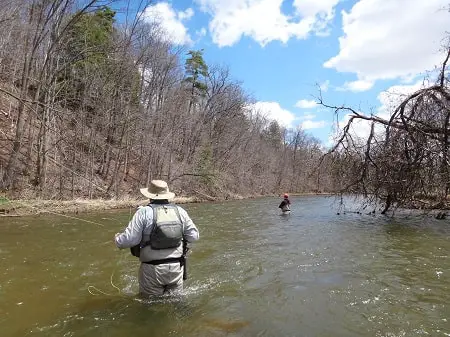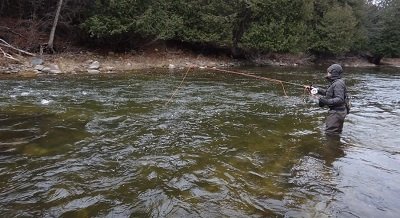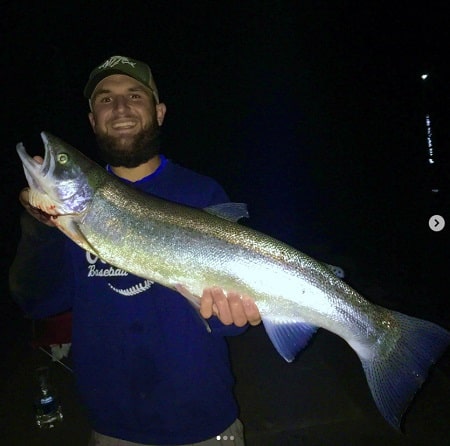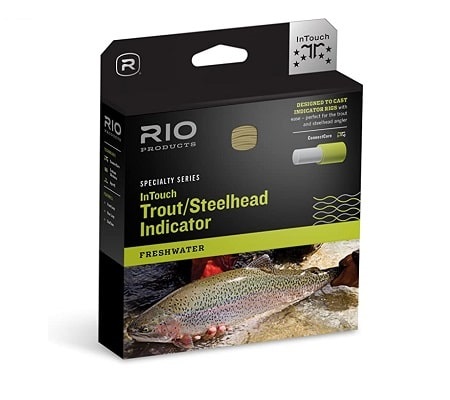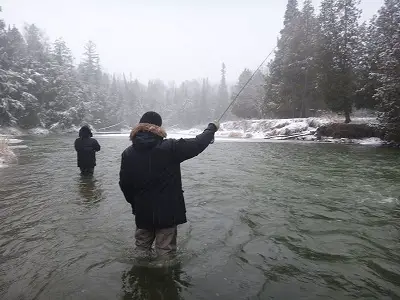Winter Spey Fishing For Steelhead: Tactics Used By Guides
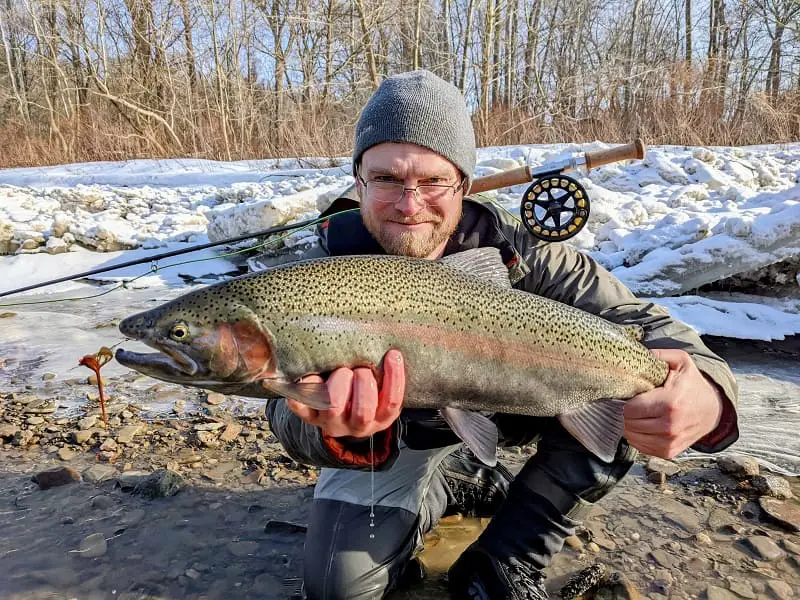
I still remember the first time I tried Winter Spey fishing for steelhead. It was on a trip to fish early winter steelhead on one of Michigan’s best steelhead rivers. Three of the guys I was with brought their spey rods, and I brought my nymphing rod. But after watching these guys fishing with Spey rods, I knew I had to try it.
Soon after I returned home, I had a switch rod and a full spey rod and reel set up ready to start spey fishing.
Twenty years later, I now guide and teach spey fishing to other anglers.
But let me tell you, Spey Fishing For winter steelhead can be challenging if you don’t know what you are doing. I have determined the key things that need to be done to enable me to be far more effective.
In the winter, I change my strategy, and you should too:
- Look for fish in deeper and slower water.
- Mend better to slow your fly down and even change the angle of the fly as it passes by the steelhead.
- Get deeper and stay deep.
- Change flies regularity and rotate from smaller to larger flies.
- Fish later in the morning and mid-day.
With these tips, tactics, and advice provided by Spey fishing expert guide Gareth Thomas and myself, you can be more successful.
NOTE: This article is written by Gareth Thomas from Alley Grabs Guide Service and is co-written and edited by Graham.
Winter Spey Fishing For Steelhead
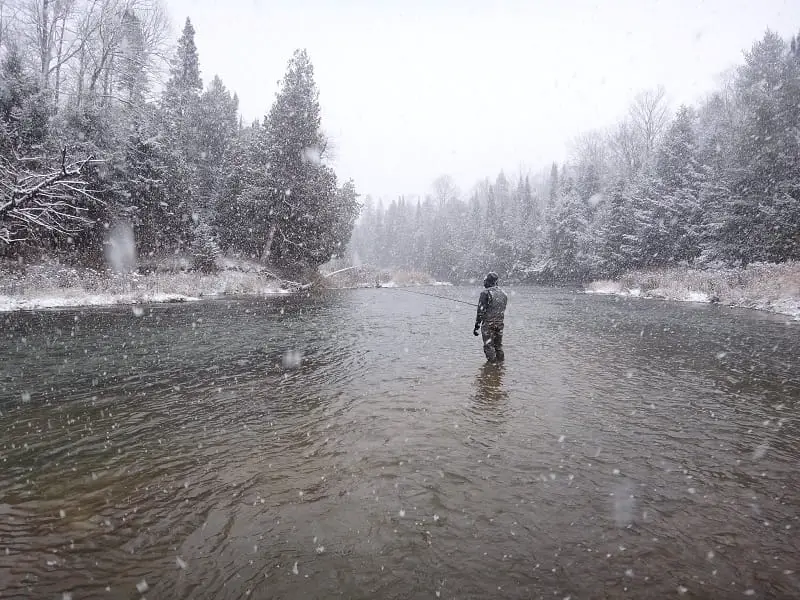
Swinging a large fly on a double-handed rod is undoubtedly the most exciting method in a steelheader’s arsenal.
As the crowds disappear, you’ll have pools full of steelhead to yourself, so there is no reason to hang up your Spey gear when the water temperature drops.
Where And When Is Best For Winter Steelhead Fishing
Productive winter Spey water can often be found near the favorite steelhead spots you already have. Rather than the heads and tailouts of fast runs, focus on the deep, slow, seemingly more featureless water in between.
Deep bends and pools you might normally dismiss as too slow to swing effectively can be prime producers.
Keep bankers’ hours in the wintertime. Any slight warming trend during the day, when the bright sun has been on the water for a few hours, will often trigger feeding windows for steelhead. Even in 34-degree (1C) water, a slight temperature increase is all that’s necessary to turn the bite on.
Since direct sunlight is the main vehicle by which water warms, I have found that sunny days in winter often produce the most action. I’ve also found that a cloudy day with warmer temperatures can cause a slight warming of the water, especially on spring-fed rivers.
A prolonged period of stable water temperature can also improve fish activity. The steelhead shut down overnight as the water cools, but once it stabilizes for four hours or more, all those same steelhead will start feeding again.
You should avoid hitting the river while the water temperature is actively dropping. Cold snaps or days where the temperature has dropped sharply from the day before will likely not produce good winter Spey fishing, regardless of sun or cloud. Remember that stable or warming temperatures are ideal while cooling trends are rarely good for winter steelhead fishing.
I discuss water temps, feeding activities, and holding spots in more detail on my page Winter Steelhead Fishing.
Gear For Winter Spey Fishing
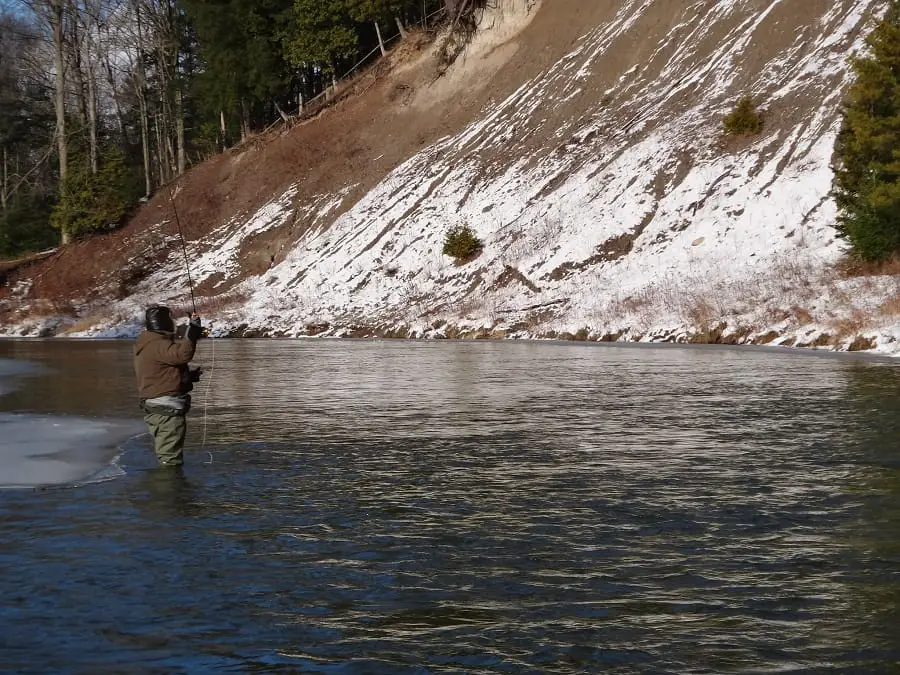
In Ohio, where I guide and fish, winter Spey fishing requires no significant change in terminal tackle. My clients are generally most successful on Skagit setups with 5′-10′ tips with sink rates between five and nine inches per second.
You’ll select tips in the heavier portion of this range in winter, but you needn’t acquire new tips or lines specifically for winter Spey fishing.
Choose a tip that will place your fly in the bottom third of the water column without hitting the bottom. Your favorite Spey or Switch rod from 11′-12′ in length will be plenty.
Be sure to dress warmly and have the right gear to keep you dry. As a guide, I’m often on the river for many days straight, and that means standing in frigid water and below-freezing air temperatures.
I have learned what to wear and how to dress to keep me warm, comfortable and dry. Check out my pages Fishing In The Winter – Stay Warm With These 10 Tips and Winter Steelhead Fishing: Tips And Tactics Of Expert Guides.
For more information on the right size spey rod, reels, and lines for different rivers, check out Spey Fishing For Steelhead: Best Setup And Tactics, and for the best Spey and switch rods, check out Best Spey Rods For Steelhead and The Best Switch Rods For Steelhead.
Fly Selection For Spey Fishing For Steelhead In Winter
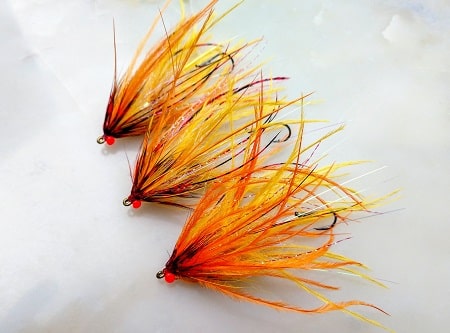
Contrary to what you may have heard, steelhead in winter are very happy to chase and attack a swung fly.
However, they stop actively feeding in frigid water, so fly selection changes from what we’d use in fall and spring.
For more on Spey fishing during fall and spring, check out Fall Spey Fishing Tactics For Steelhead and Spring Spey Fishing For Steelhead.
Rather than realistic baitfish imitators in muted colors, select larger, more ostentatious flies.
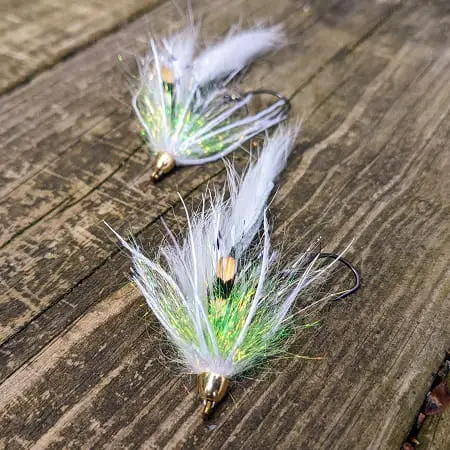
On bright days, intruders and Dirty Hohs in white/chartreuse or orange are very effective. During dark conditions, the Senyo AI in black/blue is a prime producer.
Our goal is to induce a playful or curious response from the steelhead rather than getting it to eat out of hunger.
Carry flies in a variety of colors and sizes, as what works on one river may not produce on another.
Fly Presentation: Speed And Angles
Fly presentation is the most critical aspect of winter Spey fishing for steelhead.
In spring or fall, we’re often instructed to present the fly downstream at a 45-degree angle, mend the line upstream, and then allow the fly to pendulum across the current. This is good advice in warmer water, but it is emphatically the wrong approach for winter Spey fishing.
This is because steelhead tend to hold in areas of slower current as their energy drops in the winter. If you’ve selected a piece of deep, slow water, fly speed will not be an issue.
Your goal should be to present the fly as close to 90-degrees to the current as possible, and to keep it in profile across the current, thereby showing the fish the side of your fly, as much as you can.
First, deliver your cast further upstream than you normally would, at more like a 75-degree angle, landing the fly close to the far bank.
Next, rather than mending the line, position the rod on the downstream side of your body. As the fly swings across the current, move your rod progressively closer to the bank you’re standing on, almost as if you’re “leading” the fly through the swing.
You do not need to worry about speeding the fly up too much – in slow water, even a cold, lethargic steelhead will easily chase your fly down.
Handling The Grab
We’re all familiar with the sudden, electric jolt of a frenetic steelhead taking in the spring or fall. While this can occasionally happen in winter Spey fishing, it’s unusual. The takes will typically be slower and more tentative.
It’s not uncommon for a winter steelhead to follow a fly all the way across the river, pecking and pulling at it the whole way.
When you feel the take, DO NOT MOVE. As long as you leave the fly where it is, the steelhead will not spook or become aware of your presence. You should wait until you feel the full weight of the fish, and line is coming off the reel, before you lift the rod. This can take up to fifteen seconds.
I have never had a client miss a take by striking too late; it is much more common to strike too early.
Also, be sure to check out Converting Finicky Steelhead On The Spey and learn how steelhead guides deal with steelhead that tap the fly but don’t fully commit at first.
Tight Lines
Gareth

